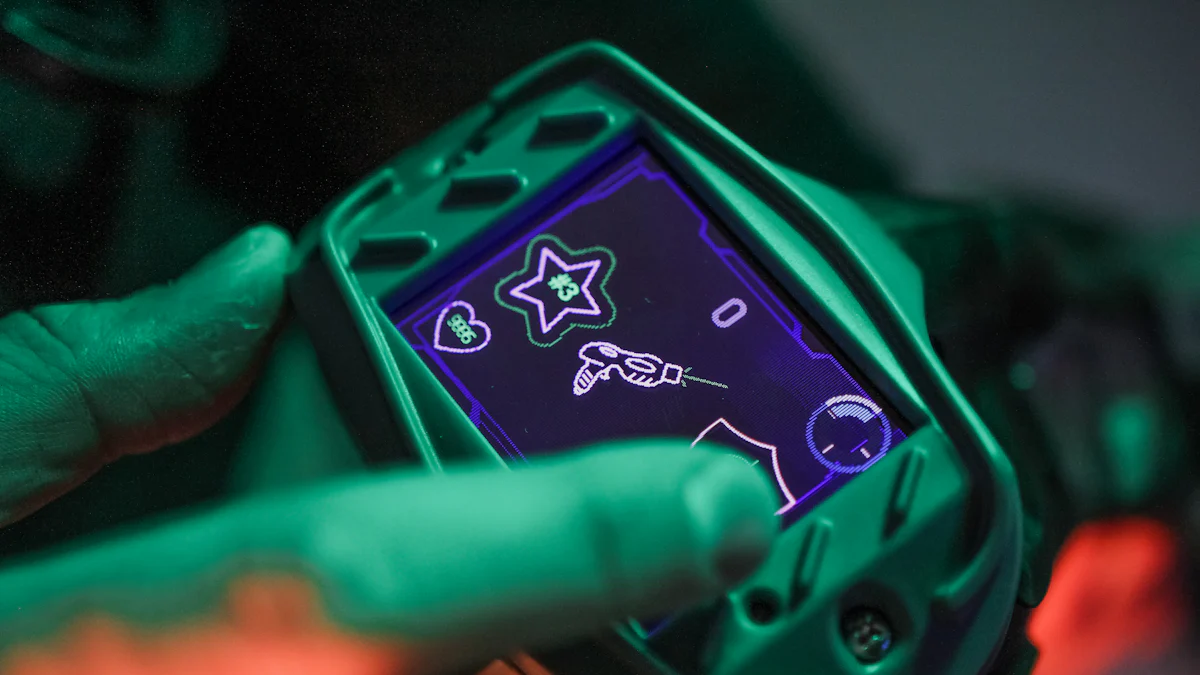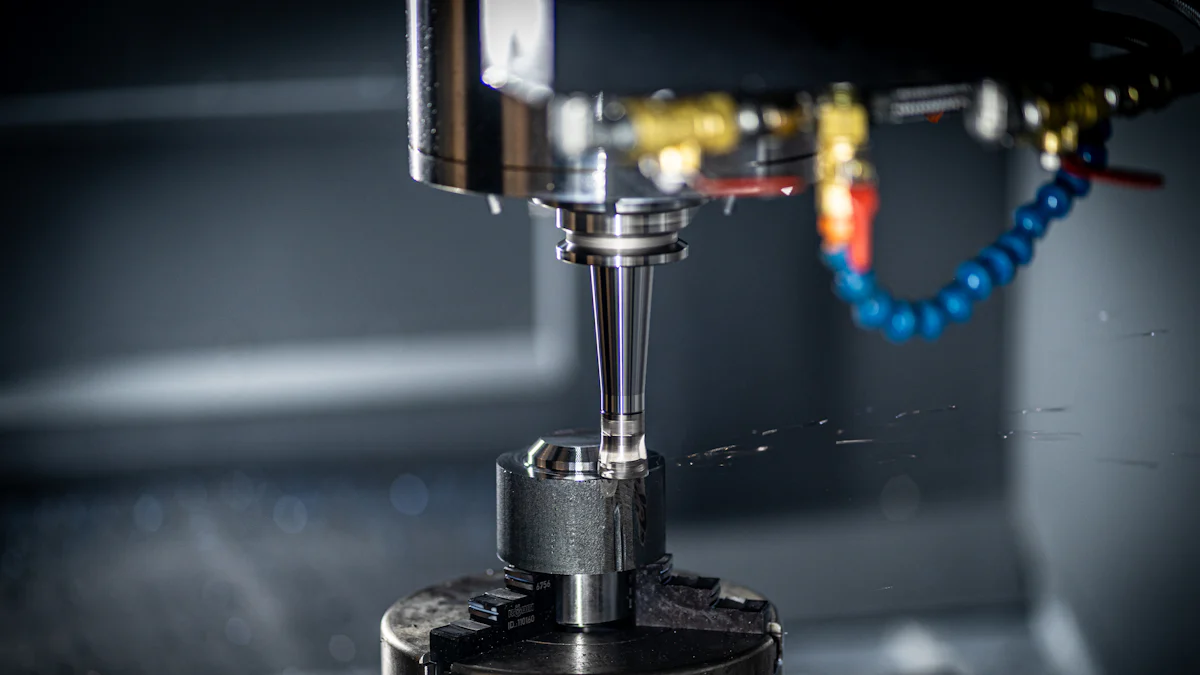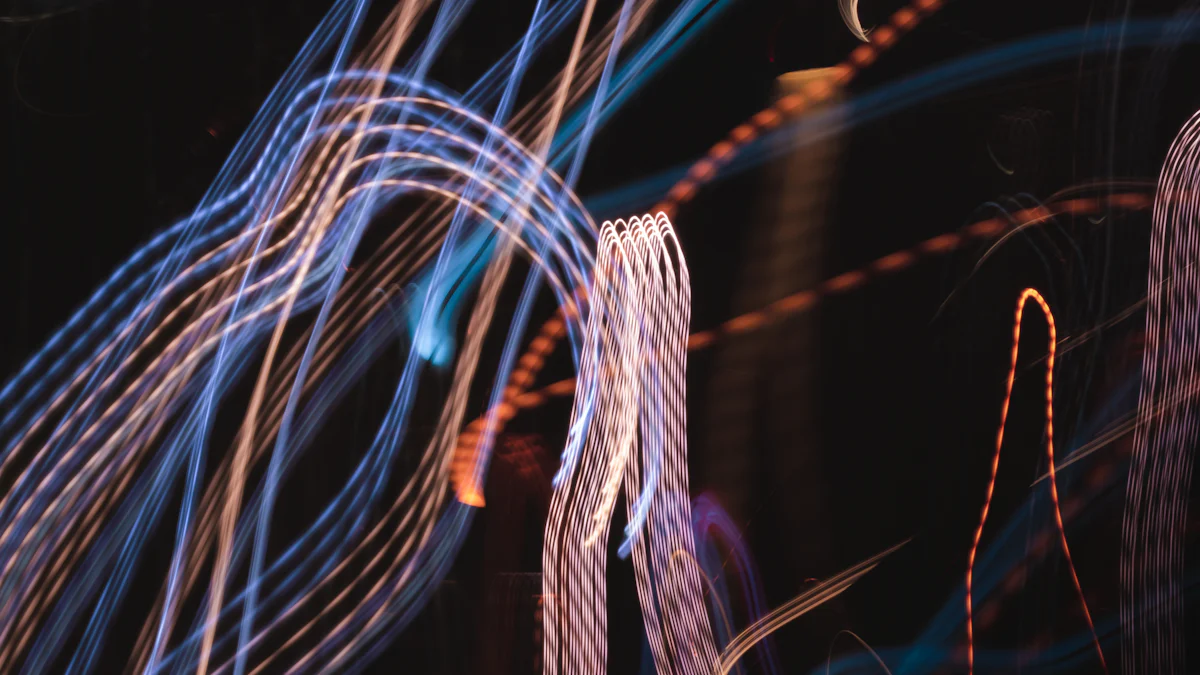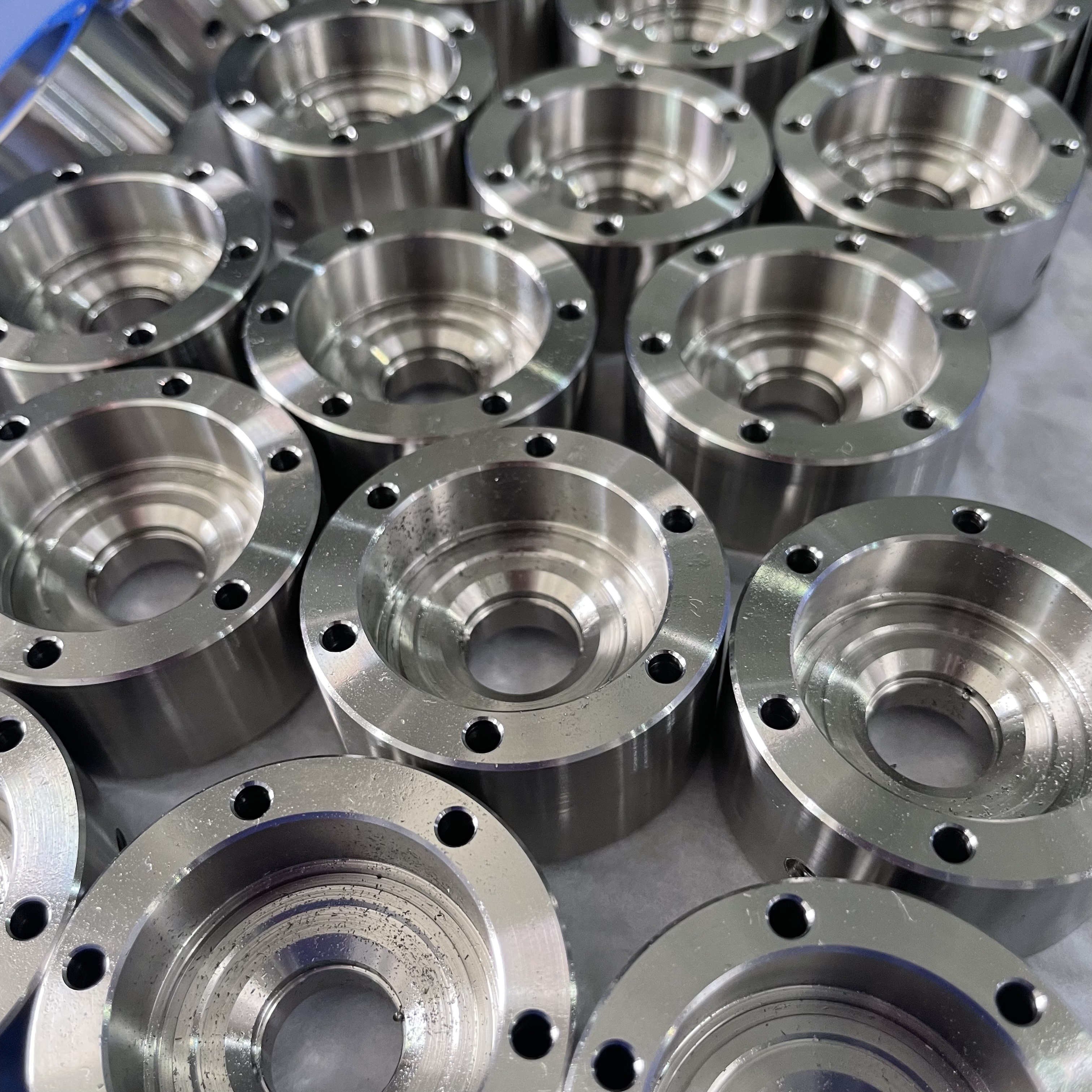Powder Coating Aluminum Products Made with CNC

When it comes to finishing aluminum products, powder coating stands out as a game-changer. It’s not just about making your products look good; it’s about giving them a tough, long-lasting finish. Powder coating creates a protective layer that resists wear, scratches, and corrosion, keeping your aluminum looking great for years.
Powder coating is a safe finishing process, as it does not release volatile organic compounds (VOCs) like paint does.
Unlike traditional methods, powder coating doesn’t rely on harmful solvents or toxic chemicals. This means no risk of soil or water contamination. Plus, it’s eco-friendly! Overspray can be collected and reused, reducing waste. You’re not just protecting your products—you’re protecting the planet too.
Key Takeaways
Powder coating gives aluminum a strong, lasting cover to stop damage.
This safe method skips harmful chemicals and cuts down on waste.
Cleaning aluminum well is key to getting a smooth finish.
Picking the right coating makes items stronger and look better.
Working with experts helps make sure the coating is done right.
Benefits of Powder Coating for Aluminum Products

Durability
Resistance to wear, scratches, and environmental factors
Powder coating offers unmatched durability for aluminum products. It forms a tough, adhesive layer that resists chipping, scratching, and wear. This makes it ideal for items exposed to harsh conditions, like automotive parts or outdoor furniture. Unlike traditional paints, powder coatings hold up against environmental factors such as UV rays, moisture, and temperature changes. For example, automotive wheels treated with powder coating maintain their finish even after years of exposure to road debris and weather.
Long-lasting protection for aluminum surfaces
When you choose powder coating, you’re investing in long-term protection. The coating acts as a barrier, shielding aluminum surfaces from damage and extending their lifespan. Untreated aluminum can oxidize over time, forming a chalky residue. Powder coating prevents this by sealing the surface, ensuring your aluminum products stay in top condition for years. Industries like aerospace and architecture rely on powder coating applications to enhance the durability of critical components, such as aircraft frames and building facades.
Aesthetic Appeal
Wide variety of colors and finishes available
Powder coating doesn’t just protect—it transforms. You can choose from a wide range of colors and finishes to match your style or branding. Popular options include matte black, gloss white, and vibrant hues like red or yellow. If you want something unique, metallic finishes like bronze or copper add a luxurious touch. Textured finishes, such as wrinkle or hammertone, create a tactile feel, while pearlescent and iridescent effects bring a multi-dimensional look. Custom colors and graphics are also available, giving you endless possibilities.
Smooth, professional-grade appearance
Powder coating delivers a flawless, professional-grade finish. The coating creates a smooth, solid surface that looks sleek and polished. Whether you prefer a high-gloss shine or a subtle matte look, powder coating ensures a consistent and even appearance. Textured finishes, like sandpaper or antique effects, add depth and character. This versatility makes powder coating perfect for CNC machining projects where aesthetics matter as much as functionality.
Corrosion Resistance
Prevents oxidation and rust on aluminum
Powder coating provides superior durability by protecting aluminum from oxidation and rust. While aluminum doesn’t rust like steel, it can still corrode when exposed to moisture and oxygen. Powder coating seals the surface, keeping out water and corrosive chemicals. This barrier ensures your aluminum products remain free from chalky residue or discoloration. Whether it’s window frames in architecture or engine parts in automotive applications, powder coating keeps your products looking and performing their best.
Environmental Benefits
Free of harmful solvents and chemicals
When you choose powder coating, you’re making an environmentally conscious decision. Unlike traditional solvent-based paints, powder coating doesn’t contain volatile organic compounds (VOCs). VOCs are harmful chemicals that can pollute the air and pose health risks. By avoiding these, powder coating reduces air pollution and creates a safer workspace for everyone involved.
This eco-friendly process also helps you avoid the hassle of strict environmental regulations. For example, compliance with laws like the Clean Air Act becomes easier since powder coating doesn’t release hazardous air pollutants (HAPs). You’ll also save on waste disposal costs because there’s no need to handle toxic solvents. It’s a win-win for your business and the planet.
Minimal waste due to recyclable materials
Powder coating is not just clean—it’s efficient. During the application process, any excess powder can be collected and reused. This means you’re not wasting materials, which helps reduce your overall costs. Overspray, which would typically go to waste in other methods, gets a second life here.
The process also aligns with key environmental standards. For instance, it meets the U.S. Green Building Council’s guidelines for sustainable design. Plus, regulations like the Resource Conservation and Recovery Act (RCRA) ensure that waste from powder coating is managed responsibly.
Here’s a quick look at some of the regulations powder coating complies with:
Regulation | Description |
|---|---|
Clean Air Act | Limits emissions of particulate matter and requires permits for large-scale operations. |
Clean Water Act | Controls pollutants in wastewater, including heavy metals and suspended solids. |
Resource Conservation and Recovery Act (RCRA) | Ensures proper management of hazardous waste and mandates permits for waste generation. |
By choosing powder coating, you’re not just protecting your aluminum products—you’re contributing to a cleaner, greener future.
The Powder Coating Process for Aluminum Products

The powder coating process involves several steps to ensure a durable and flawless finish. Each stage plays a critical role in achieving the best results for your aluminum products.
Surface Preparation
Cleaning to remove contaminants
Before applying any coating, you need to clean the aluminum surface thoroughly. Contaminants like grease, oil, and dirt can interfere with adhesion. Cleaning typically involves mechanical methods, such as scrubbing, or chemical solutions that break down stubborn residues. This step ensures the coating bonds properly to the aluminum.
Abrasive blasting or chemical etching for adhesion
Once cleaned, the surface needs to be prepared for better adhesion. Abrasive blasting methods like sandblasting or vapor honing are common. Sandblasting works well for thicker aluminum, while vapor honing uses water and abrasives to minimize material loss. Chemical etching is another option, where specific solutions roughen the surface microscopically. This creates a strong foundation for the coating to adhere to.
Powder Application
Electrostatic application of powder
The next step is applying the powder. This is done using an electrostatic spray gun, which charges the powder particles. The charged powder sticks to the grounded aluminum surface, ensuring even coverage. Spray booths and recovery systems help contain overspray and recycle unused powder, making the process efficient and eco-friendly.
Component | Description |
|---|---|
Powder Spray Booth | Filters air and contains overspray during application. |
Powder Feeder | Supplies powder to the spray gun. |
Electrostatic Spray Gun | Charges powder particles for adhesion to grounded surfaces. |
Corona Charging Guns | Uses high-voltage fields to charge powder, ideal for flat surfaces. |
Tribo Charging Spray Guns | Charges powder through friction, perfect for complex shapes. |
Recovery and Retrieval Systems | Collects and reuses overspray, reducing waste. |
Ensuring even and consistent coverage
To get a smooth finish, you must ensure the powder is applied evenly. The electrostatic process helps achieve this, but you should also check for any missed spots or uneven layers. Consistency is key to a professional-grade appearance.
Curing
Heating the coated aluminum to bond the powder
After applying the powder, the aluminum goes into a curing oven. The heat melts the powder, forming a uniform layer that bonds to the surface. This step is crucial for creating a durable coating.
Achieving a durable, hardened finish
Curing temperatures typically range from 325°F to 400°F, with times between 10 to 25 minutes. For most applications, 400°F for 10–20 minutes works best. This process hardens the coating, giving it the durability needed to resist wear and environmental factors.
Temperature (°F) | Time (minutes) |
|---|---|
325 - 400 | 10 - 25 |
400 | 10 - 20 |
By following these steps, you can ensure your aluminum products have a long-lasting, high-quality finish.
Challenges and Considerations in Powder Coating
Surface Imperfections
Addressing scratches or machining marks
Surface imperfections can ruin the final look of your powder-coated aluminum. Scratches, machining marks, or blemishes left during CNC machining need attention before you start the coating process. Dirt and weld spatter are common culprits that can interfere with the finish. You can fix these by grinding or sanding the surface. For issues like outgassing, preheating the aluminum above the curing temperature helps release trapped gases. Laser-cut edges may also need scale removal to ensure proper adhesion. Taking these steps ensures your coating looks flawless and professional.
Importance of thorough preparation
Preparation is everything when it comes to powder coating. A poorly prepared surface can lead to peeling, bubbling, or cracking. You need to clean the aluminum thoroughly to remove contaminants like oil, dirt, or rust. Degreasing and abrasive blasting are excellent ways to achieve a clean surface. Think of preparation as the foundation for your coating—it’s what ensures the durability and quality of the final product.
Material Compatibility
Ensuring the aluminum alloy is suitable for powder coating
Not all aluminum alloys are created equal. Some work better with powder coating than others. Alloys with high silicon or magnesium content tend to perform well because they bond effectively with primers like epoxy or zinc-rich coatings. These primers enhance adhesion and provide extra corrosion resistance. Choosing the right alloy ensures your coating lasts longer and performs better in demanding environments.
Avoiding issues with heat-sensitive components
Heat-sensitive aluminum parts can pose challenges during the curing process. High temperatures might cause warping or uneven coatings. To avoid this, you can preheat the parts to release trapped gases or use powders designed for outgassing. Consistent application techniques and regular equipment calibration also help prevent defects like color mismatches or uneven finishes. Paying attention to these details ensures your aluminum components come out looking their best.
Challenge | Problem Description | Mitigation Strategy |
|---|---|---|
Uneven Coating | Results from improper application techniques or incorrect settings on equipment. | Ensure consistent application, calibrate powder flow, and maintain equipment regularly for uniform coverage. |
Outgassing in Cast Alloys | Gases trapped in casting release during curing, causing bubbles or blisters. | Preheat cast parts to release gases and use powders formulated for outgassing to minimize defects. |
Cost Considerations
Balancing quality with budget
Balancing quality and budget can feel tricky, but it’s doable. Start by understanding the factors that affect costs, like the type of coating, part complexity, and order volume. Standard coatings are usually more affordable than specialized ones. Collaborate with your powder coating provider to explore customization options that fit your budget. A realistic plan based on your project’s needs will help you get the best value without sacrificing quality.
Additional costs for preparation and curing
Preparation and curing add to the overall cost of powder coating. Cleaning, abrasive blasting, and preheating require time and resources. Curing ovens also consume energy, especially for large-scale projects. While these steps might seem expensive, they’re essential for achieving a durable and long-lasting finish. Investing in proper preparation ensures your aluminum products meet high-quality standards, saving you money in the long run.
Tips for Successful Powder Coating
Selecting the Right Powder Coating Material
Match the coating type to the application
Choosing the right material is key to achieving the best results. Think about where your product will be used. Will it face harsh weather or chemicals? If so, prioritize corrosion resistance and chemical durability. For high-temperature environments, thermoset materials work best since they resist heat after curing. On the other hand, thermoplastics are ideal for applications needing flexibility and chemical resistance.
You should also consider the mechanical properties of the coating. Does your product need to withstand impacts or scratches? If yes, opt for a tougher material. Don’t forget about aesthetics. Whether you want a smooth, glossy finish or a textured look, the material you select will impact the final appearance.
Consider durability and finish requirements
Durability and finish go hand in hand. Powder coating offers exceptional toughness, but the material you choose determines how well it performs. For example, a simulated weathering test showed that aluminum with a high-quality powder coat can endure 20 years of UV exposure and corrosion with minimal damage. This makes it perfect for outdoor applications.
Additionally, the finish you want—whether matte, glossy, or metallic—depends on the material. Some powders even allow for pearlescent effects or tactile textures like wrinkle or hammertone. Matching the material to your durability and finish needs ensures your product looks great and lasts long.
Prioritizing Surface Preparation
Invest in proper cleaning and preparation
Preparation is the foundation of a flawless finish. Start by thoroughly cleaning the aluminum to remove grease, oils, and dirt. Use mechanical methods like media blasting or chemical solutions for stubborn contaminants. Etching the surface with a solution can also improve adhesion by creating microscopic roughness.
For added corrosion resistance, apply a conversion coating before the powder coating process. This step strengthens the bond between the aluminum and the coating, ensuring a durable finish. Proper preparation might take extra time, but it’s worth it for long-lasting results.
Use professional-grade equipment
Using the right tools makes all the difference. Media blasting with aluminum oxide effectively cleans the surface, while alkaline degreasing removes any remaining oils. After cleaning, passivation with a nitric acid bath eliminates iron-based residues. Dry the parts thoroughly before applying the coating to avoid defects.
Professional-grade equipment ensures consistency and quality. For example, spray booths and recovery systems help apply the powder evenly while minimizing waste. Investing in the right tools sets you up for success.
Working with Experts
Partner with experienced powder coating professionals
Working with experts saves you time and ensures top-notch results. Look for professionals with extensive experience and advanced equipment. They’ll know how to handle challenges like outgassing or uneven coatings. A skilled team will also ensure proper surface preparation, which is crucial for strong adhesion.
Choose a partner who values customer service and project success. A centrally located facility can simplify logistics, while just-in-time delivery capabilities streamline your supply chain. Collaborating with the right professionals makes the entire process smoother.
Ensure quality control throughout the process
Quality control is non-negotiable. Professionals should perform tests like the crosshatch adhesion test to ensure the coating adheres properly. Solvent cure tests can check the durability of the finish. Regular inspections during the process help catch issues early, saving you time and money.
By partnering with experts who prioritize quality, you can achieve a flawless, durable finish that meets your expectations.
Powder coating is a fantastic way to enhance your CNC-machined aluminum products. It offers unmatched durability, protecting surfaces from chipping, cracking, and corrosion. Plus, it adds a stylish touch with a variety of colors and finishes to match your design needs. Whether you’re aiming for a sleek modern look or a bold statement, powder coating delivers.
Proper surface preparation is key to achieving a flawless finish. Partnering with experienced professionals ensures your aluminum products get the care they deserve.
By understanding the process and addressing challenges, you can create long-lasting, high-quality products that stand out. Powder coating doesn’t just protect—it elevates the value and appearance of your aluminum products.
FAQ
What makes powder coating better than traditional paint?
Powder coating is tougher and lasts longer. It resists scratches, chipping, and corrosion better than paint. Plus, it’s eco-friendly since it doesn’t release harmful chemicals. You also get a smoother, more professional finish with a wide range of colors and textures to choose from.
Can all aluminum products be powder coated?
Most aluminum products can be powder coated, but not all alloys are ideal. Heat-sensitive parts or certain aluminum grades may face challenges during curing. Always check the material’s compatibility with powder coating to avoid issues like warping or poor adhesion.
How do I maintain powder-coated aluminum?
Maintenance is simple! Clean the surface with mild soap and water. Avoid abrasive cleaners or harsh chemicals. For outdoor products, rinse off dirt and debris regularly to keep the coating looking fresh and vibrant for years.
Is powder coating safe for the environment?
Absolutely! Powder coating doesn’t use harmful solvents or release VOCs. Overspray can be recycled, reducing waste. It complies with environmental regulations like the Clean Air Act, making it a sustainable choice for finishing aluminum products.
How long does powder coating last?
With proper application and maintenance, powder coating can last 15-20 years or more. Its durability depends on factors like exposure to weather, UV rays, and wear. High-quality coatings and good surface preparation ensure a longer lifespan.
Tip: Regular cleaning helps extend the life of your powder-coated products!
See Also
Benefits of Utilizing CNC Machining Services for Aluminum
CNC Machining Process and Uses of Aluminum Alloy 7075
CNC Machining Aluminum Alloys 6061 and 7075: A 2024 Overview
Top Strategies for Achieving Scratch-Free CNC Machined Aluminum
A Comprehensive Look at Anodizing CNC Machined Aluminum Heat Sinks
About US
Follow Us
Your prototype holds unparalleled significance, and we deeply value its uniqueness. Collaborating with you during the preparation phase for running your prototype or parts is a commitment we gladly embrace. Whether it's a single part or a complex assembly, we are dedicated to selecting the optimal tools and pathways to bring your envisioned product to life.
At Precision Fab CNC Machining, we specialize in producing parts for prototypes, short runs, and high-volume production. Our prototyping machine capabilities extend across metal, plastic, and wood machining, with welding fabrication services available to complement and finalize your prototype if required.
Address
Address: Room320 10F, Building A,Nanshan international building, Dayawan District, Huizhou, Guangdong, 516001 China
Contacts
billy@timaycnc.com

